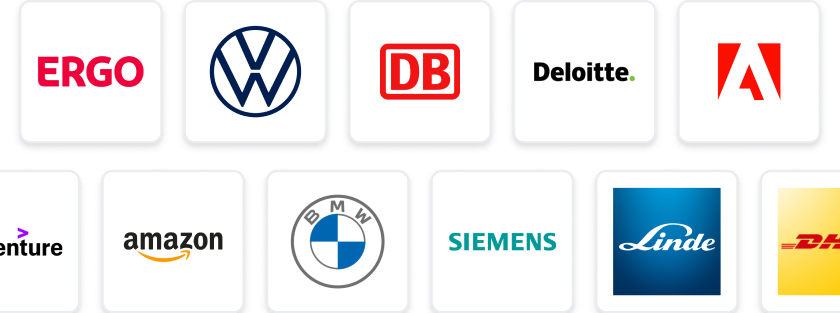At a Glance
- Tasks: Design, test, and optimize electric propulsion systems for satellite operations.
- Company: Join a cutting-edge company in the space industry focused on innovative propulsion technology.
- Benefits: Enjoy competitive salaries, equity options, and the chance to work on groundbreaking projects.
- Why this job: Be part of a mission that advances satellite technology and makes a real impact in space.
- Qualifications: 3+ years in electric propulsion; hands-on testing experience required.
- Other info: Work with a collaborative team and engage in the full lifecycle of satellite technology.
The predicted salary is between 48000 - 72000 £ per year.
Electric Propulsion Engineer – Space Industry
We are seeking an Electric Propulsion Engineer to support our client in the development of an Air-Breathing Electric Propulsion (ABEP) system, critical for satellite operations at Ultra Low Earth Orbit. You will be responsible for calculating, designing, testing, and optimizing this plasma propulsion system within dedicated vacuum facilities.
Key Responsibilities:
- Oversee the ABEP system and manage the full testing process.
- Rapidly iterate new designs to ensure successful delivery of a demonstration mission.
- Collaborate with mechanical, electrical, and control engineers to test and refine the ion propulsion system, ensuring seamless operation.
- Assemble test hardware and electronics and operate vacuum facilities.
- Perform electric propulsion tests and analyze performance data.
Fundamental Requirements:
- 3+ years of experience in electric propulsion (including relevant PhD experience).
- Strong knowledge of spacecraft electric propulsion systems, such as RF Thrusters, Hall Effect Thrusters, and Gridded Ion Propulsion.
- Hands-on experience with electric propulsion testing, ideally involving RF generators, high-voltage power supplies, and thrust balance.
- Experience working with vacuum systems (pumps, gauges, valves), power supplies, fluidic management systems, and data acquisition systems.
- Solid understanding of plasma physics, modeling, diagnostics, and ionization processes.
Why Join?
- Innovative Space Technology: Be part of a mission that will launch groundbreaking technology into space next year, advancing satellite operations in ultra-low Earth orbits.
- Ownership and Impact: Engage in the complete lifecycle of satellite technology, addressing challenges in preparing propulsion systems for space.
- Competitive Compensation: Our client offers competitive salaries and equity options, enabling you to share in the success of the pioneering technology you help build.
If you’re passionate about advancing propulsion technology and ready to make an impact, apply now!
Electric Propulsion Engineer employer: Micro IT Global
Contact Detail:
Micro IT Global Recruiting Team
StudySmarter Expert Advice 🤫
We think this is how you could land Electric Propulsion Engineer
✨Tip Number 1
Familiarize yourself with the latest advancements in electric propulsion systems, especially RF Thrusters and Hall Effect Thrusters. This knowledge will not only help you during interviews but also demonstrate your genuine interest in the field.
✨Tip Number 2
Network with professionals in the space industry, particularly those working on electric propulsion projects. Attend relevant conferences or webinars to connect with potential colleagues and learn about current challenges and innovations.
✨Tip Number 3
Gain hands-on experience with vacuum systems and electric propulsion testing equipment. If you have access to labs or workshops, practice assembling test hardware and operating vacuum facilities to enhance your practical skills.
✨Tip Number 4
Prepare to discuss specific projects where you've successfully collaborated with cross-functional teams. Highlight your ability to work with mechanical, electrical, and control engineers, as teamwork is crucial for the role.
We think you need these skills to ace Electric Propulsion Engineer
Some tips for your application 🫡
Understand the Role: Make sure to thoroughly read the job description for the Electric Propulsion Engineer position. Understand the key responsibilities and fundamental requirements, as this will help you tailor your application.
Highlight Relevant Experience: In your CV and cover letter, emphasize your 3+ years of experience in electric propulsion. Include specific projects or roles where you worked with RF Thrusters, Hall Effect Thrusters, or Gridded Ion Propulsion.
Showcase Technical Skills: Detail your hands-on experience with electric propulsion testing and vacuum systems. Mention any relevant tools or technologies you have used, such as RF generators, high-voltage power supplies, and thrust balance.
Express Your Passion: In your motivation letter, convey your enthusiasm for advancing propulsion technology and your desire to contribute to innovative space technology. Make it clear why you want to be part of this mission.
How to prepare for a job interview at Micro IT Global
✨Showcase Your Technical Expertise
Be prepared to discuss your experience with electric propulsion systems in detail. Highlight specific projects where you worked with RF Thrusters, Hall Effect Thrusters, or Gridded Ion Propulsion, and be ready to explain the challenges you faced and how you overcame them.
✨Demonstrate Problem-Solving Skills
Expect questions that assess your ability to rapidly iterate designs and troubleshoot issues. Share examples of how you've successfully managed testing processes and refined propulsion systems under tight deadlines.
✨Collaborate Effectively
Since the role involves working closely with mechanical, electrical, and control engineers, emphasize your teamwork skills. Discuss instances where you collaborated on complex projects and how you ensured seamless operation across different engineering disciplines.
✨Understand the Testing Environment
Familiarize yourself with vacuum systems and testing facilities. Be ready to talk about your hands-on experience with electric propulsion testing equipment, such as RF generators and thrust balances, and how you utilized these tools to analyze performance data.
